Stalls, Slow Flight, and Life: An Emotional and Physical Roller Coaster
[This is the fifth in a series of articles detailing my journey to earning a private pilot certificate. Click to read: Part 1, Part 2, Part 3, Part 4.]
This last week, I was scheduled to have two flight lessons and I couldn’t be happier. I was told we would try some slow flight, and maybe continue working on steep turns. Tuesday night, I finished my “homework,” a pre-solo worksheet I have to complete and memorize before I can solo, prepped my coffee for the next morning and went to bed early (read: before midnight). I woke up at the first ring of my alarm with a smile on my face, bounded out the door, and went about my day until I got a text from Dave, my instructor.
“The airport isn’t allowing us to open our hangar doors because of all the snow, so we’re going to have to cancel our lesson today. Let’s try again Friday.”
My heart plummeted. My first thought was, “That was the reason I got out of bed this morning.”
After struggling to productively finish my work day, I went home and watched a couple videos from my Sporty’s online training (and the movie adaptation of Dune, which very disappointingly did not have ornithopters like the book). I’ve been watching the videos as opposed to reading Jeppeson because I absolutely cannot get past the chapter on meteorology for pilots. Despite all the pretty pictures of clouds, it’s the most dense, uninteresting chapter I’ve read thus far. I’d love to hear from you all tips and tricks to make weather more interesting if any exist.
Emotional Stress Does Not a Safe Pilot Make
Anyway, the next morning, Thursday, marked the day that my baby brother shipped out for Afghanistan. I’d be lying if I said I handled it well. He’s in the Army, artillery, and though I am proud of him, insanely proud, in my mind, he still has a bowl cut and wears Spider-man pajamas. My stomach was in my throat, my heart was out of commission, and it felt like someone was squeezing my lungs. It feels, I should say, because that feeling hasn’t abandoned me for one second since I told him I loved him and hung up the phone.
The Day of My Flight Lesson
That day came and went, and finally, it was Friday, the morning of my next flight lesson. The afternoon prior, Dave said the airport gave him the All Clear to conduct flight lessons, and so again I woke up early and rushed out the door to drive to the Truckee-Tahoe Airport, a.k.a. home sweet home.
Unfortunately for me, this miraculous winter on the Lake, though beautiful and a blessing to those in the ski industry, seems to have it out for me. My ancient 2WD car with 260,000 miles and no rear wind shield (thanks, falling ice chunks) has been fighting tooth and nail to just get by. This morning was no different, and after 45 minutes of wrestling with my now severely damaged key to open my frozen-shut doors, I shot Dave a text letting him know I’d be late.
Resume fighting with door.
Repeat texting Dave (“Sorry, a little later than I thought!”)
Again, return to struggling with door.
Eventually, after realizing something broke on my car lock and it was close to 30 minutes after I was supposed to have hit the runway with Dave, I let him know I wasn’t going to be able to make my lesson. I sat down in the snow, angrily staring at my car, and tried (unsuccessfully) not to cry because I wasn’t going to get to go flying this whole week.
And that’s when I heard my neighbor talking to some guy in a truck about my locks being frozen shut. I brushed it off as small town chitchat and continued wallowing in my misery until motion out of the corner of my eye caught my attention.
You Can Fix Anything with Duct Tape, WD-40, and… a Blowtorch?
That “some guy” was walking up to me with a blowtorch (yes, literally a blowtorch) in hand. I leapt up, gave him the 4-1-1 on my stupid car, and he took the torch directly to the passenger side door lock. After the paint all around the handle started to bubble and melt (he was doing me a favor so I tried not to be upset), he decided we should just “get the key super hot and jam it in there.”
I shrugged, handed him my key, and a couple minutes later, I was climbing over the passenger seat and slowly pulling out of the igloo that is my parking spot, waving and yelling thanks to my neighbor and Blowtorch Guy.
Excited as always to fly, the drive there was taken in silence, my brain overthinking everything it possibly could about my car breaking, and my brother stuck in a C-131 with a bunch of other young boys in camo, leaving the country for the very first time in most of their lives.
Managing Risk (Irresponsibly)
I mentally read through the acronyms PAVE (Personal, Aircraft, enVironment, External Pressures) and IMSAFE (Illness, Medication, Stress, Alcohol, Fatigue, Emotion) to determine whether I should fly with my mind all in a funk, and decided I didn’t care. I needed to fly, to get out of my own head and focus on something bigger. And besides, Dave would be right next to me the whole time.
I arrived at KTRK about 25 minutes earlier than I told Dave I’d be there, and he sent me to go pre-flight the glass cockpit Skyhawk I flew for the first time since my last lesson. I mentally pictured shoving my emotions into my flight bag and zipping it shut. Now, my focus was all dedicated my flying partner, Six Eight Foxtrot.
My First Pre-Flight All By Myself!
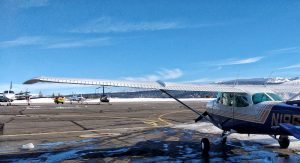
Using the checklist, I successfully completed my first solo pre-flight! Not a huge deal in the big scheme of things, but it was exciting. Another feather in my student pilot cap. Dave arrived at the hangar accompanied by a giant bulldozer to scrape the frozen chunks of snow out of our way. Even so, and even with the motorized tug, it took some strength and help from Dave to pull the little Skyhawk over the remaining strips of ice.
After hopping into the toasty warm cockpit and completing all appropriate checklists, we rolled to the runway. Dave took the controls, saying, “I’ll take us a little faster since you already know how to taxi.” I felt a blush of pride as I recalled how confident I felt sticking to the center line last lesson. Damn right I know how to taxi! Watch out world, here I come at the pace of a brisk walk!
Run-up, Take Off, and Slow Flight
We made it into the run-up area off to the side of Runway 2-9, did our run-up, and waited as plane after plane (a couple jets and a Skywagon) landed or took off before we got our turn. But once our turn came around, it was exhilarating. I’ll have to check with Dave, but I’m pretty sure I took off all on my own!
“Pull up, harder, harder, come on more aggressive, harder and… there we go!” Dave coached as we hurtled down the runway at a not-really breakneck pace. Once we were airborne, I let out a small “Woohoo!” which got me an “Alright, alright keep climbing,” sort of response from Dave.
And there it was! We were airborne, and I felt a genuine smile tug at my lips. I felt like a weight had been lifted off my chest, but I would find later that the weight was simply relocated.
We turned right and headed over to Stampede Reservoir to do some slow flight maneuvering. The air was beautiful, only the slightest buffet every now and again, which is essentially the same thing as no turbulence when flying in the mountains.
Stalls and Spins and the Conditioned Reflex
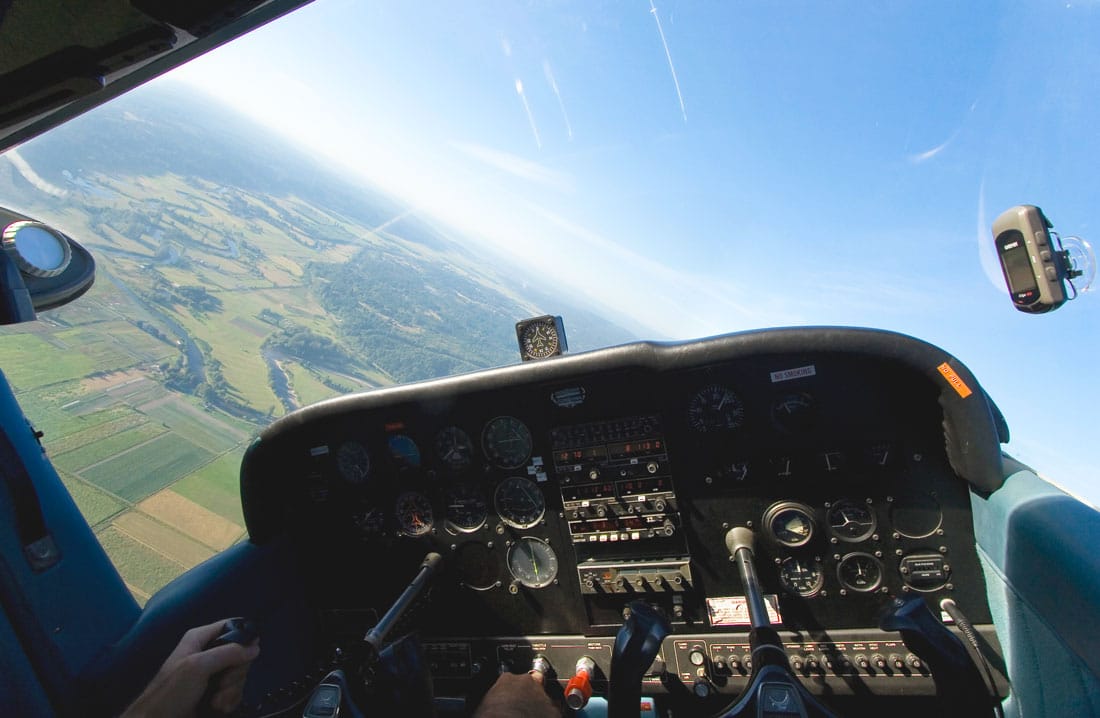
I once received a comment from a concerned aviator suggesting that stall/spin accidents result from the pitch/power technique pilots use to control their airplanes. He suggests that pilots are less likely to stall and spin if taught to use the elevator as an airspeed control. This supposedly trains pilots to resist the urge to stretch their glide by use of the elevator control. I only wish an inoculation against stalling and spinning were that simple. Based on this gentleman’s premise, glider pilots should have an exceptionally low stall/spin accident rate. [Click to read more…]
Trying My Hand at Slow Flight and Trimming to Relieve Control Pressure
Dave demoed slow flight after I leveled us off at 8,500, about 3,000 feet AGL. It was kind of awesome! He made it very clear that slow flight is essentially just an exercise for student pilots to realize that you’re not going to just drop out of the sky if you pull back the throttle. The intense nose-up attitude made it hard to admire the gorgeous snow-capped Sierra Nevada Mountains, though.
After he felt I got the hang of maintaining slow flight, he had me do some nice, easy turns to the left and to the right, finding random places on the compass that Dave would point out. By this point, the loaner headset I found in the back of 68F was making it hard for me to focus. My head felt like it was stuffed with cotton balls that weighed a thousand pounds. The headset fit wrong in every way possible. The ear cups were too low, and the band was squeezing the living daylights out of my head. That, combined with the sinus congestion almost everyone in the mountains develops in the winter, was bringing me to the edge of nausea and forcing me to look into the abyss. Let me tell you, it wasn’t pretty.
I decided I wanted to tough it out, so I kept my mouth shut. That was a mistake.
Dave asked me if I had any questions regarding slow flight, (I said no) and asked me if I wanted to head back (I said hell no). “In that case, let’s practice some stalls.”
Power-Off Stalls
After bringing us to the edge of a stall, Dave let go of all the controls, and the Skyhawk started to sink and dip heavily to the left. “You know how to fix that?” he asked, as we discussed spins vs. graveyard spirals. “Right rudder!” I yelled, and was given back the controls. I almost asked him to put us into a real spin, but the headset crushing my skull made me think twice.
He demoed stall recovery from a fully developed power-off stall and had me level us off at 7,500 (we had switched compass headings so we were now flying odd plus 500, instead of even). After I did so, he showed me a recovery from a power-off stall that was just about to happen. I felt that butterflies-in-your-stomach feeling that you get as a little kid driving over big hills, or when you’re older and riding roller coasters. I LOVE that feeling, it always makes me smile. I was tempted to throw my hands in the air and scream, “Woooo!” but only managed to let out a short “Wo-!” before Dave had us back to our starting position.
Now, It’s My Turn
Carb heat on, pull back the throttle, guide the nose up, up, up, add flaps ten degrees at a time as your airspeed drops, and listen for the buzzer. As the stall warning horn began to shriek at us, I jammed the power in and put the nose down, giving the right rudder all I got, and cleaned ‘er up. For the first time in all my flight lessons, I was apparently a little too aggressive with the back pressure. But no matter, we did it! I recovered from a stall (after very narrowly avoiding a secondary stall with Dave’s help) and we survived!
As I tried to bring us back to level flight, that mountain wind we all know and love found us and tried to push us around a bit. By this time, my head felt like a swollen, rotten apple someone stepped on. Ker-splat! I found myself squinting one eye and ceaselessly fidgeting with the headset to try and relieve the pressure. At this point, I felt like I wasn’t even capable of learning- I was just focusing on not throwing the damn thing out the window or accidentally flying us into a mountain.
When Dave asked me how I felt about stalls, and if I had any questions, I decided to put my pride away and tell him I was feeling pretty crummy. He nodded knowingly, opened the cockpit airflow tube thing, and switched the radio to speakers so I could hear the weather or anything I needed to hear without a headset on. Man, I didn’t realize how noisy it is! I could see his lips moving, and heard nothing but wind.
Mountain Wave: My Scariest Flight Ever
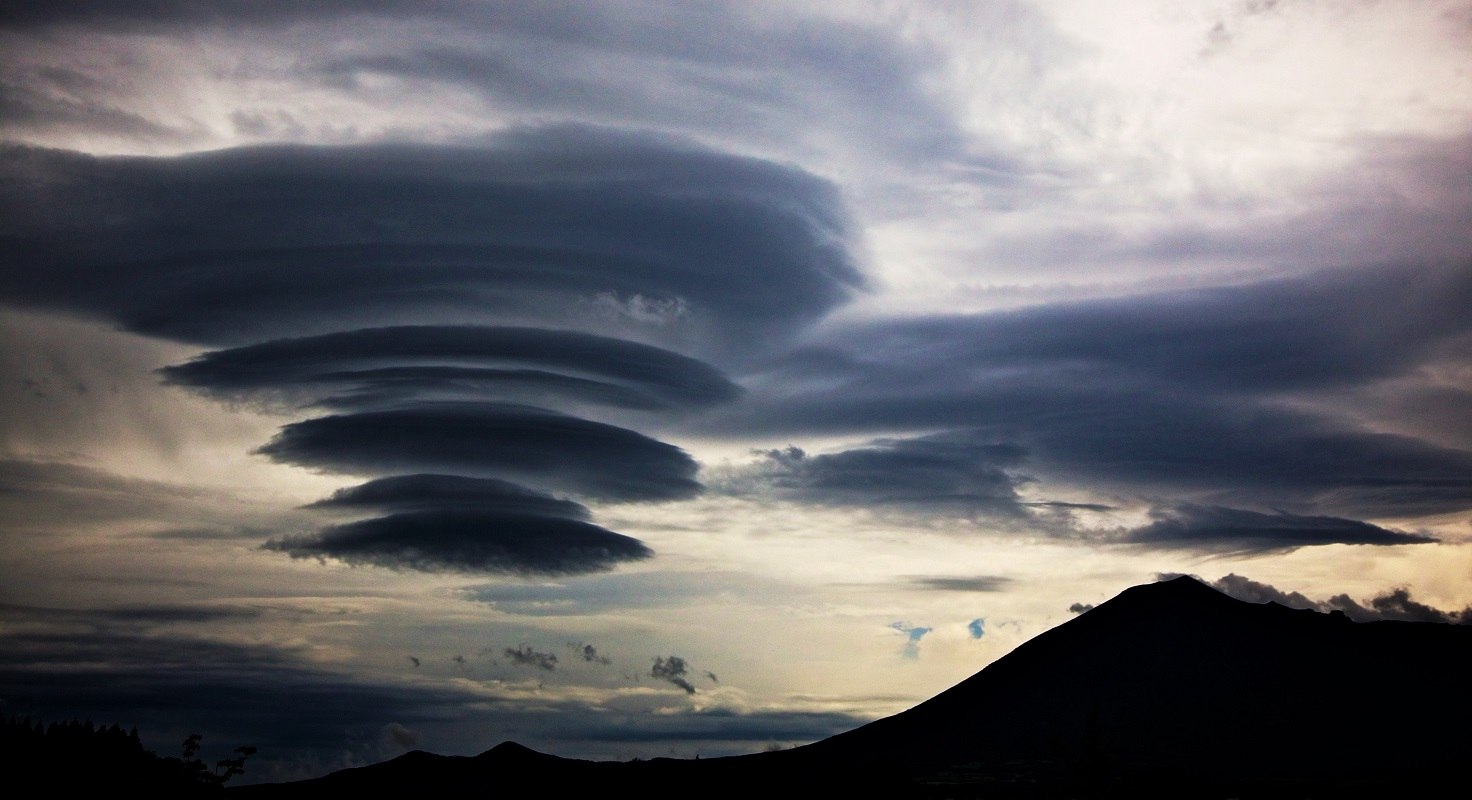 It was a lazy, sunny southern California Saturday in February, 1998. We didn’t yet know it, but we were almost going to die that day. I sat in the kitchen reading the paper as the morning’s quiet was interrupted by the ringing telephone. It was my son calling from Mammoth Mountain, where he had been on a ski trip. A storm was predicted for the next day and they had decided to leave early. He would be home in eight hours. “I wish I was flying; then it would only be an hour,” he grumbled. [Click to read more…]
It was a lazy, sunny southern California Saturday in February, 1998. We didn’t yet know it, but we were almost going to die that day. I sat in the kitchen reading the paper as the morning’s quiet was interrupted by the ringing telephone. It was my son calling from Mammoth Mountain, where he had been on a ski trip. A storm was predicted for the next day and they had decided to leave early. He would be home in eight hours. “I wish I was flying; then it would only be an hour,” he grumbled. [Click to read more…]
10 Miles Out, Incoming for Landing on Two Zero
We started making our way back to Truckee, and Dave did the 10 miles out radio call as we fought the light turbulence we anticipated when deciding to fly back through a valley. When I tried to put my headset back on, Dave shook his head and told me to just enjoy the flight, and check out the scenery. Though I wanted to help with the landing, I was secretly pretty relieved. (It’s been about 5 hours since my lesson and my head is still aching!)
After chatting with another Skyhawk (Zero One Hotel, my last flying buddy!) and arranging our landing to avoid a Phenom going out for aerial photography, Dave brought us straight in for landing, narrating his steps the whole way. We landed on Runway 2-0, which felt absolutely tiny compared to 2-9. When I asked if it was smaller, Dave responded in the affirmative and told me it’s about 4500’ compared to Runway 2-9’s 7000’. I said, “Smooth landing!” as Dave touched down because I tend to blurt out everything that pops into my mind (I’m a work in progress), and he laughed and said, “Yeah, I’ve only done it about 20,000 times.” I responded, “Oh, so that’s the trick!” only slightly joking.
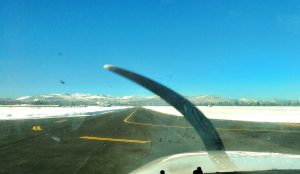
I taxied us back to the Bravo hangars, and after another epic battle between the tug and the snow patches, I filled out the time sheet and my log book all by myself! Again, another little feather for my student pilot cap.
We tucked 68F back into her sleeping bag, plugged her in, and set off for the FBO to schedule my next couple lessons and chat about buying myself a headset that won’t render me brain dead after an hour of flying.
Tahoe weather, hear me now: Please be kind and let me fly next Thursday and Friday! If not, I will begin to assist global warming in any way I can to bring this whole “winter” nonsense to an end. Permanently.






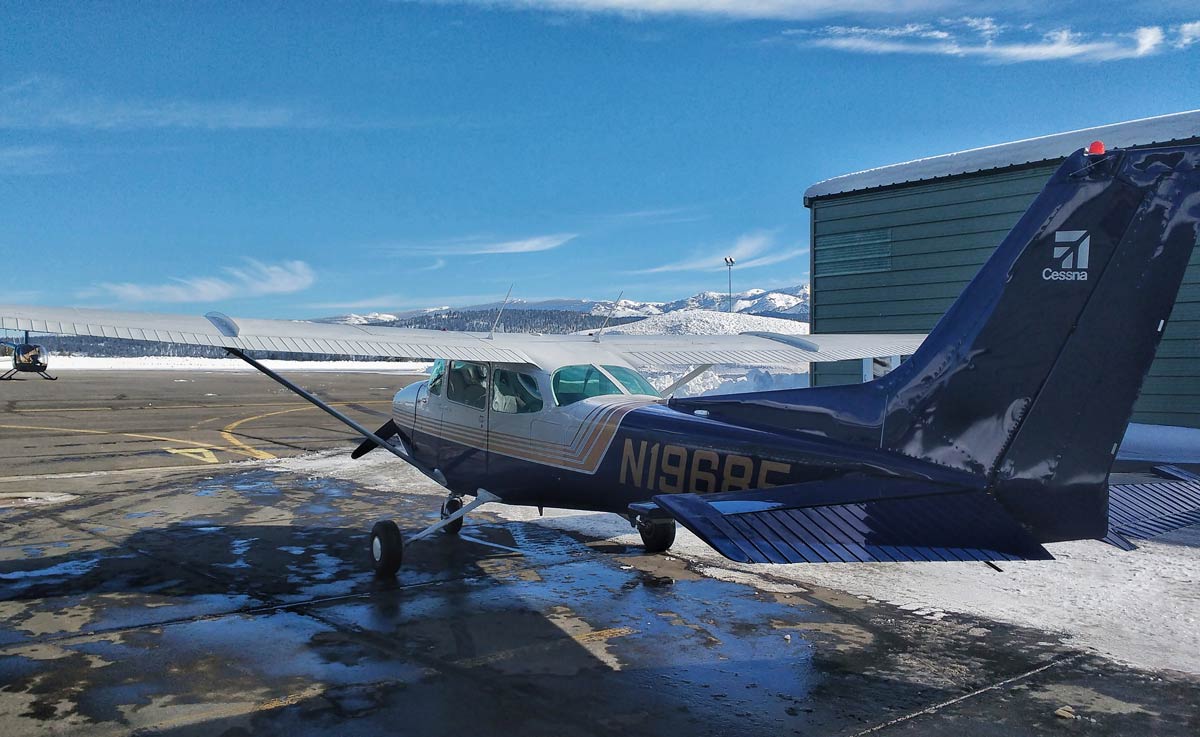
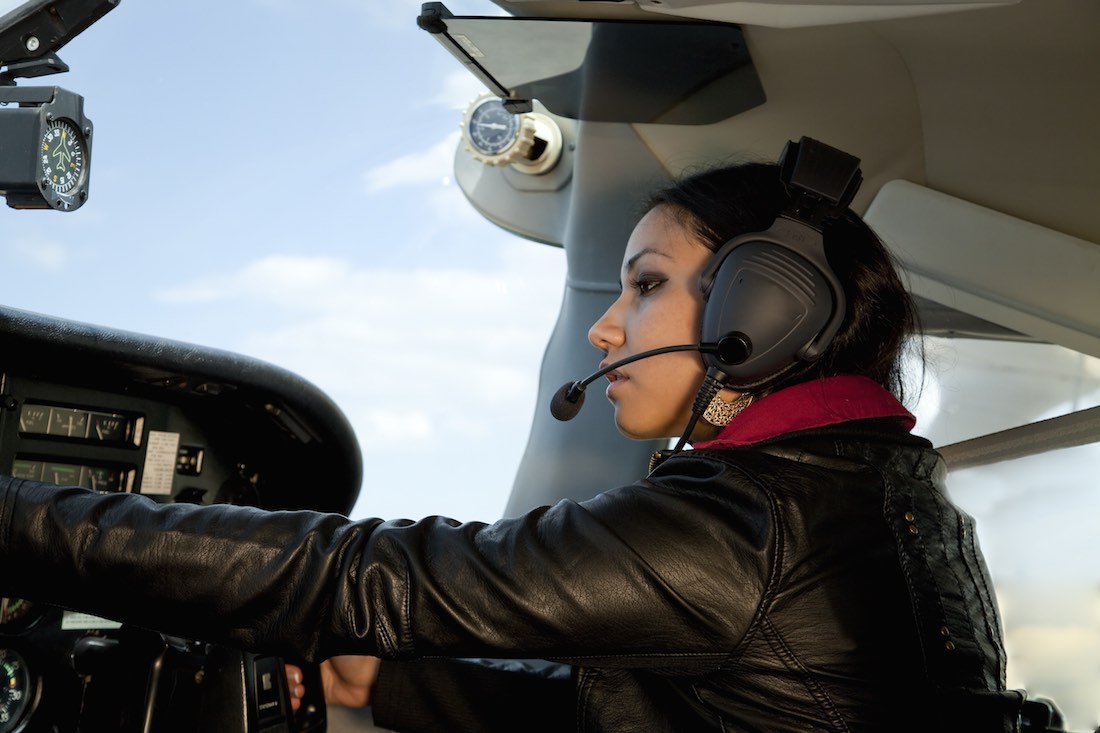



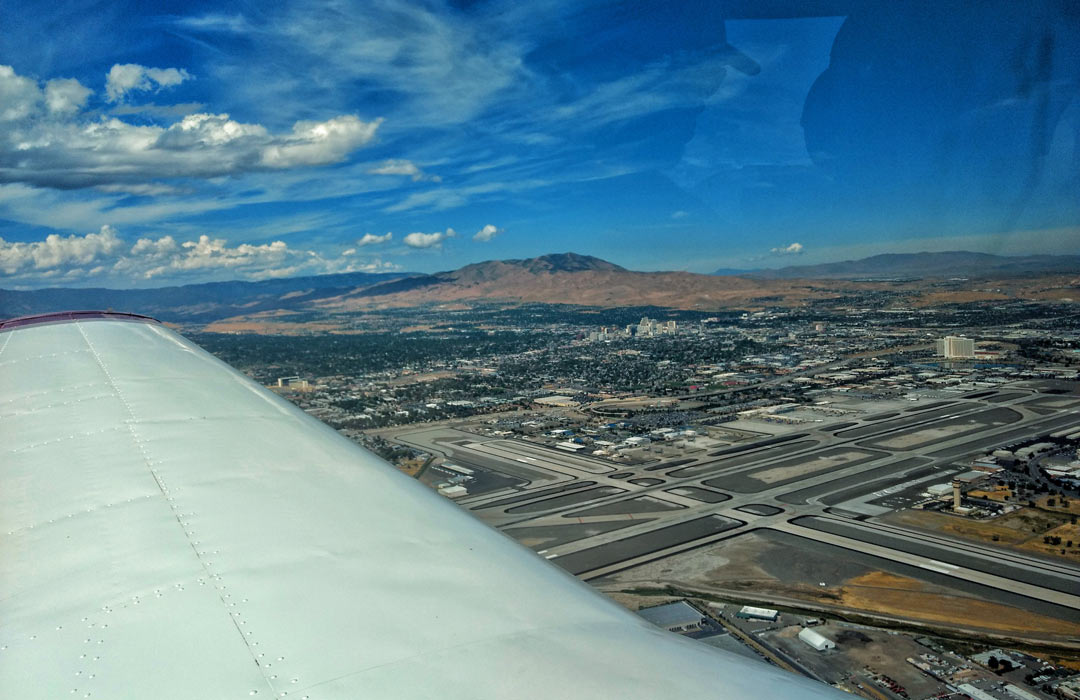



Leave a Reply